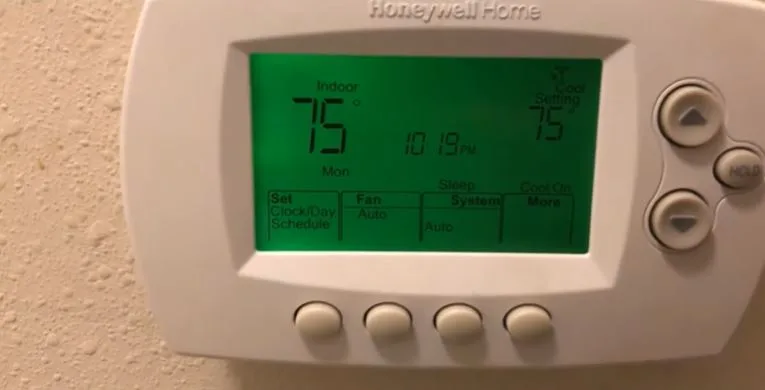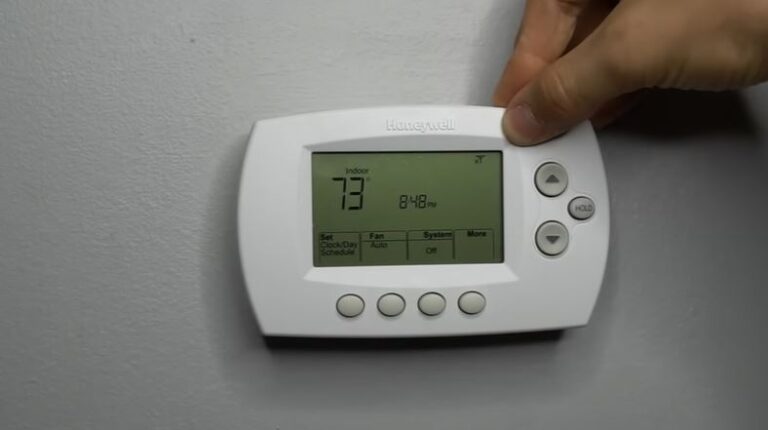What is Nest Airwave? A Guide to Understanding and Using It
Nest Airwave is a feature of Nest thermostats that helps to reduce energy consumption by circulating cool air through the house’s vents even after the compressor has stopped running.
This feature uses the fan to push air through the ducts, which cools the house while using less energy than running the compressor continuously.

How to turn Airwave On/Off
You can turn on Airwave from either your home app, thermostat or nest app.
Below are the steps on how to turn on and off Airwave from your thermostat.
(Nest Learning Thermostat and Nest Thermostat E only.)
- Press the ring to bring up the Quick View menu.
- Go to Settings Nest settings icon.
- Choose Nest Sense.
- Select Airwave.
- Select Airwave off or Airwave on. Airwave appears with a check mark (✔) next to it when it is turned on, and with a dash (–) when it is turned off.
To turn on/ off airwave from the home app, follow these steps below
- Touch and hold your device’s tile.
- At the top right, tap Settings .
- Open Temperature Preferences.
- Select Airwave.
- Tap the switch to turn Airwave off or on.
Lastly, to turn on and off airwave on your Nest app, you can follow these steps below
- Tap Settings Nest settings icon.
- Select your thermostat.
- Tap Airwave.
- Tap the switch to turn Airwave off or on.
Read also: How to Reset Nest Thermostat Quickly
How Airwave works in dry climates and other areas with low humidity
The Nest Airwave feature is designed to work in dry climates like Arizona and other areas with low humidity. In such regions, the feature works by utilizing the evaporative cooling effect of the air that’s left in the ducts after the compressor shuts off.
The dry air will absorb moisture from anything it comes into contact with, including the moisture on the coil in the air conditioning system.
This helps to reduce the humidity in the house, which improves indoor air quality and makes the house more comfortable.
When using Nest Airwave in areas with high humidity, it’s important to note that it may not work as effectively.
Read also: What Is Eco Mode On Nest Thermostat? [Energy Saving Feature]
In humid climates, the feature can cause the humidity to be pumped back into the house, which makes things less comfortable inside.
Therefore, it’s important to disable the Nest Airwave feature in humid climates like North Carolina.
The role of outdoor humidity in the Nest Airwave setting
The Nest thermostat is designed to take outdoor humidity into account when deciding whether to use Nest Airwave or not.
The thermostat has a built-in humidity sensor that monitors the outdoor humidity levels.
When the outdoor humidity is low, the Nest thermostat will use the Airwave feature to reduce energy consumption and improve indoor air quality.
When the outdoor humidity is high, the feature will not be activated, as it could potentially increase the humidity levels in the house.
Is Nest Airwave Worth Using?
Nest Airwave has been designed to help homeowners reduce energy consumption and cut costs by using the residual cold air from the air conditioning system to cool the house, instead of turning on the AC compressor.
This feature is particularly useful in dry climates like Arizona and other areas with low humidity, where Airwave can make a significant impact on energy savings.
However, there is controversy surrounding the effectiveness of Nest Airwave in humid climates, with some HVAC technicians recommending that homeowners disable the feature in areas with high humidity.
The reason for this is that when humidity levels are high, Airwave may actually pump more humidity back into the house, making it less comfortable inside.
The potential drawbacks of using Nest Airwave in high humidity areas
It’s worth noting that Nest thermostats are designed to take outdoor humidity into account when deciding whether to use Airwave.
The thermostat uses a humidity sensor to determine whether the outside air is dry enough to use Airwave effectively.
However, some users have reported that Airwave runs regardless of outdoor humidity levels, which can lead to discomfort and increased energy costs.
Another potential drawback of using Nest Airwave in high humidity areas is that it can put additional strain on the HVAC system.
This can lead to increased wear and tear, which may result in more frequent repairs or even the need for a replacement system.
Ultimately, whether Nest Airwave is worth using depends on your specific climate, as well as the condition and maintenance of your HVAC system.
It’s important to consult with an HVAC technician to determine whether Airwave is right for your home.
Regular HVAC inspections and maintenance can also help ensure that your system is working properly and efficiently, which can help you save energy and cut costs in the long run.
Read also: What is Nest Heat pump 0/B?
Using Nest Airwave in Humid Climates
Humidity plays a critical role in determining the effectiveness of Nest Airwave. In areas with high humidity, Nest Airwave may not provide as significant savings as in areas with lower humidity. However, it can still be a useful tool in reducing energy consumption and costs.
When determining whether to use Nest Airwave in humid climates, it’s essential to understand the role of both indoor and outdoor humidity.
The Nest thermostat uses a combination of temperature and humidity sensors to determine whether to activate Nest Airwave.
If the outdoor humidity is high, Nest Airwave may not be as effective in reducing energy consumption, but it can still help to maintain a comfortable indoor temperature.
There are potential drawbacks to using Nest Airwave in areas with high humidity.
For example, if the indoor humidity levels are already high, using Nest Airwave could make the air feel more humid, leading to discomfort.
Additionally, Nest Airwave can cause the AC to run less frequently, leading to less frequent air circulation, which can lead to mold growth in humid areas.
To use Nest Airwave effectively in humid climates, it’s essential to monitor indoor humidity levels regularly. If the indoor humidity levels are already high, it may be best to avoid using Nest Airwave.
Additionally, it’s crucial to ensure that the HVAC system is well-maintained and inspected regularly to prevent mold growth and other issues associated with reduced air circulation.
Proper maintenance can help ensure that Nest Airwave is a useful tool in reducing energy consumption and costs in humid climates.
Also read: What is Nest Sunblock?
Final thoughts
In summary, Nest Airwave is a feature of Nest thermostats that helps to reduce energy consumption by circulating cool air through the house’s vents even after the compressor has stopped running.
The feature works best in dry climates like Arizona and other areas with low humidity, where it can effectively reduce indoor humidity levels.
The Nest thermostat takes into account the outdoor humidity levels when deciding whether to use the Airwave feature or not, making it a smart and energy-efficient solution for controlling the temperature and humidity in your home.
Read also: What is Nest Heat Pump Balance? [An Energy Conserving Feature]
FAQ
Is Nest Airwave effective in reducing energy consumption and costs?
Yes, Nest Airwave has been shown to reduce energy consumption by up to 30% and save homeowners money on their energy bills.
Are there any drawbacks to using Nest Airwave?
In areas with high humidity, Nest Airwave may not be as effective and can actually lead to increased energy consumption if the fan continues to run and circulate humid air. Additionally, if your HVAC system is not properly maintained or inspected, Nest Airwave may not work as effectively.
How can I use Nest Airwave effectively in humid climates?
A: It’s important to adjust the settings on your Nest thermostat to account for the higher humidity in your area. You can also consider using a dehumidifier to help reduce the humidity in your home.
Can I still use Nest Airwave if I have pets?
A: Yes, Nest Airwave is safe to use with pets in the home. However, it’s important to regularly clean your air filters and ensure your HVAC system is properly maintained to keep your home’s air quality at a healthy level.
![Honeywell hz311 troubleshooting Red Light [SOLVED]](https://thermostating.com/wp-content/uploads/2023/03/true-zone-jpg.webp)
![White Rodgers Thermostat Blinking Snowflake [Solved]](https://thermostating.com/wp-content/uploads/2023/02/white-rodgers-thermostat-768x395.png)


